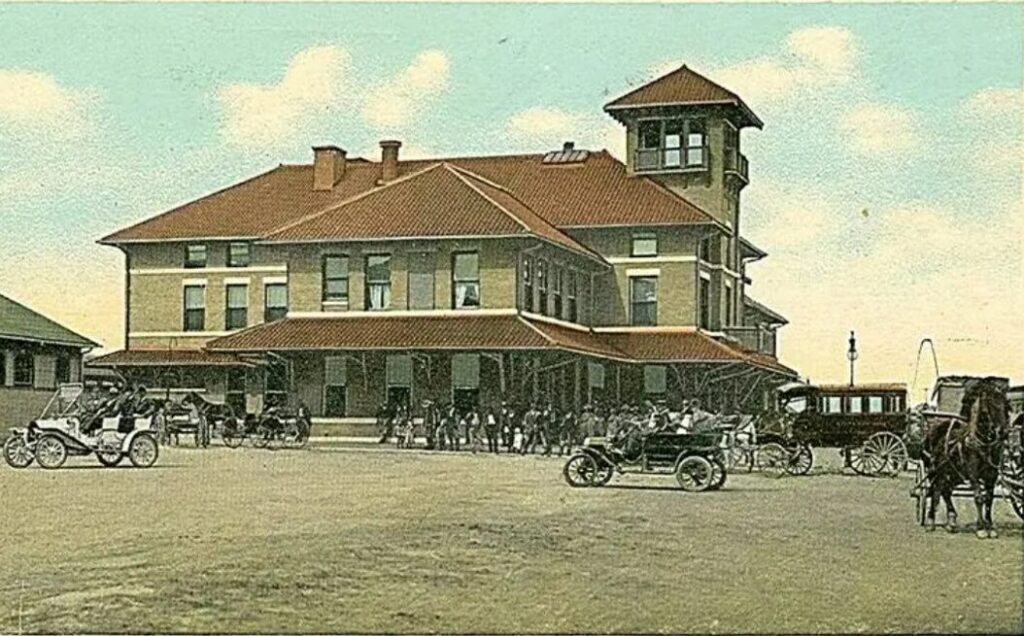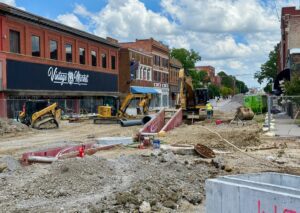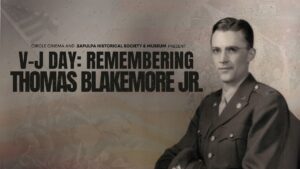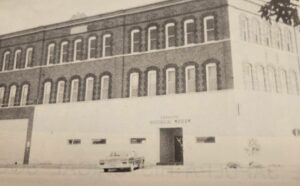The Atlantic and Pacific Railroad came to Sapulpa from Red Fork in 1886 and ended at what is now North Main Street and West Hobson Ave. As usual, wherever the railroad terminated, a small settlement would develop and this was the case for the beginning of Sapulpa. It came for the cattle industry and for the harvesting of Walnut trees. Cattle were a huge business in this area at the time, and walnut trees were plentiful along the Rock and Polecat Creek bottoms.
In 1897, the Atlantic and Pacific Railroad changed ownership and operations to be merged with St. Louis-San Francisco Railway. This would be nicknamed Frisco. The Frisco extended its line from Sapulpa to Oklahoma City.
To turn the trains around at Sapulpa’s dead end, a “Y” intersection on the railroad track would be built. The train would pull forward to the dead end, reverse along one leg of the “Y,” to another end, and pull forward to the next leg of “Y” to leave Sapulpa and head back to Tulsa. This “Y” originally sat from West Hobson Ave (and North Main St), heading south along Water St (to about where East Dewey or E Lee Ave would eventually become), then back northeast to the mainline, all before cityhood in 1898.
By the statehood year of 1907, the “Y” had been moved to East Hobson Ave, between North Maple and North Spruce Streets. Frisco built a new depot. This building would function as not only a depot, it was a hotel and restaurant. The hotel and restaurant belonged to a franchise along railroad tracks. This building was located at the junction of the three tracks, the “Y.”
It was the Harvey House.
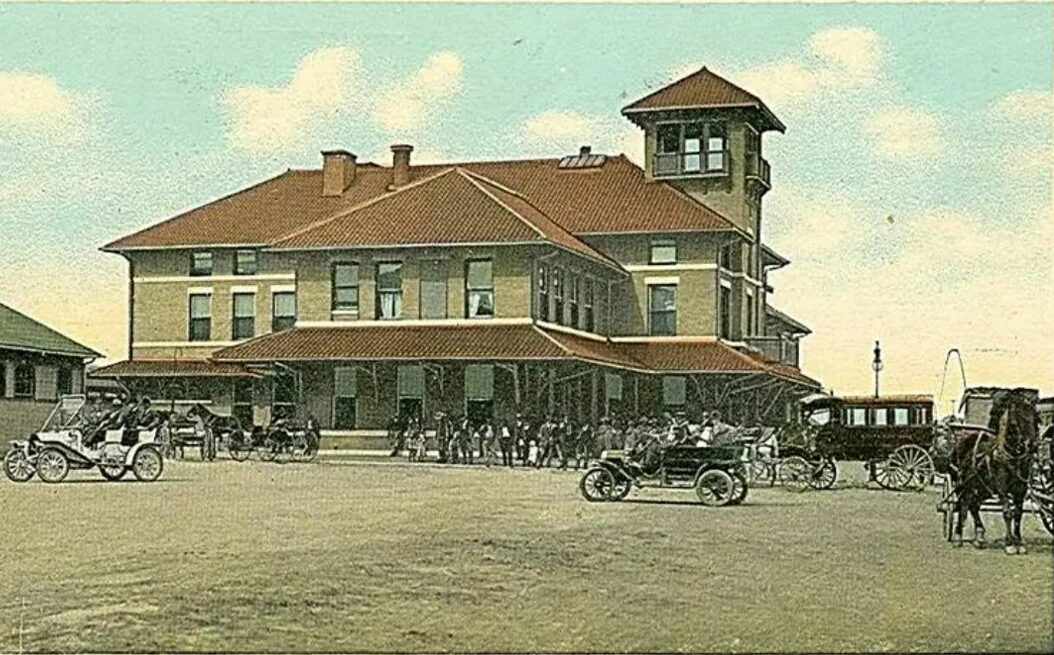
Fred Harvey immigrated to the U.S. when he was 15. He had worked his way west by working on railroads. By 1876, he was employed by the Chicago, Burlington, and Quincy (CBQ) Railroad. As an agent, he understood the quality of food and service was important to passenger experience. At the time, the railroads did not have dining cars to feed their passengers; instead, the train would have to stop for passengers to leave their cars and venture out on their own for meals.
Harvey had a restaurant business in Kansas and began understanding that the customers from the train would come and go. Harvey approached the President of the CBQ to open a franchise of restaurants along the railroads. CBQ declined the notion, however, Harvey asked another company – the Atchison, Topeka, & Sante Fe Railway (AT&SF) or the Santa Fe.
Harvey had hired people to serve the customers; the servers were nicknamed Harvey Girls. The servers wore starched black dresses, white aprons, black hose, and a white ribbon in their hair. Generally, women were not in the workforce, however, the opportunity arose during the Harvey House era.
The Harvey Girls would soon see a change in their business. Harvey Girls often would become engaged and marry a customer who came with the promise of a new life and go out west for more opportunities. Will Rogers often said “Fred Harvey kept the West in food and wives.”
Harvey restaurants served quality food on China plates with linen tablecloths and napkins. Harvey would often inspect his restaurants. When he found something that did not meet his standards, he would see that it was corrected. By keeping his standards high, Santa Fe subsidized his operations because it brought more passengers to their railroad. Harvey even found a way to take customers’ orders on board, and telegraph ahead to the next stop – the food would be ready when the train arrived.
In 1907, Sapulpa’s Harvey House blossomed in the Frisco headquarters. The Frisco would remain in Sapulpa for another two decades. It was Sapulpa’s largest employer. However, over those twenty years, Tulsa’s land, oil, and growth opportunities kept calling for Frisco to move.
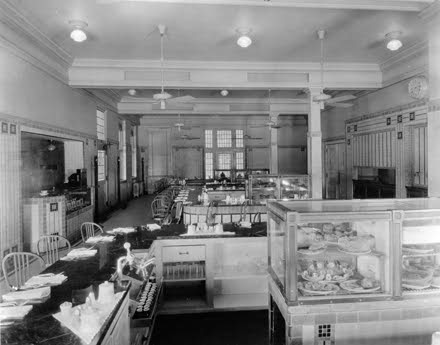
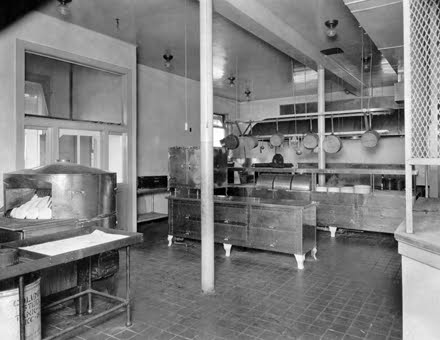
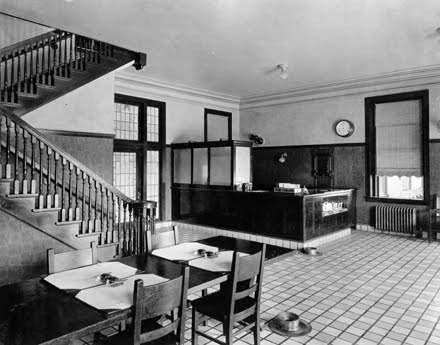
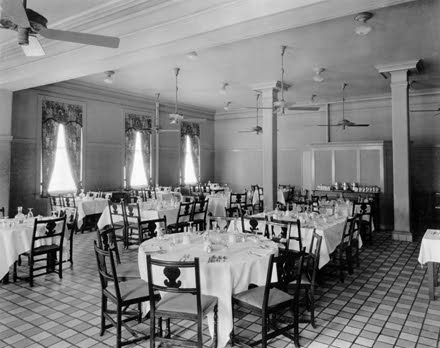
On November 29, 1921, Tulsa passed a $6.8 million bond issue to construct a new water supply from Spavinaw. It was completed three years later in 1924. By 1926, the rumors of the move to Tulsa were growing stronger and stronger. On February 9, 1927, Sapulpa’s designation as a Division Headquarters for the Frisco railroad ceased.
A short time later, the Harvey House in Sapulpa would cease their dinners.
This week in Sapulpa history, on August 14, 1930, “Harvey House closes tonight.”

“Dinner tonight at the Harvey House here will be the last meal served by this eating establishment in Sapulpa.” The workers were notified that it could be temporary, but it definitely might be permanent. “Some of the employees are remaining in the Harvey service taking positions east and west,” and others left the service completely.
“Rumors that Fred Harvey would shut down here have been circulated for the last several years and as a result recent talk has not been given much serious consideration. It was only a few days ago that a letter from headquarters made a reality out of these rumors by ordering the place closed tonight.”
The building would remain standing and operating as a train depot for passenger trains.
The building was demolished in June 1963.
(Editor’s note: If you enjoyed this story about the Harvey House, we highly recommend these other stories: Sapulpa’s Railroad History: The Harvey House and Sapulpa’s Railroad History: The Demise of the Harvey House by Cecil Cloud.)

